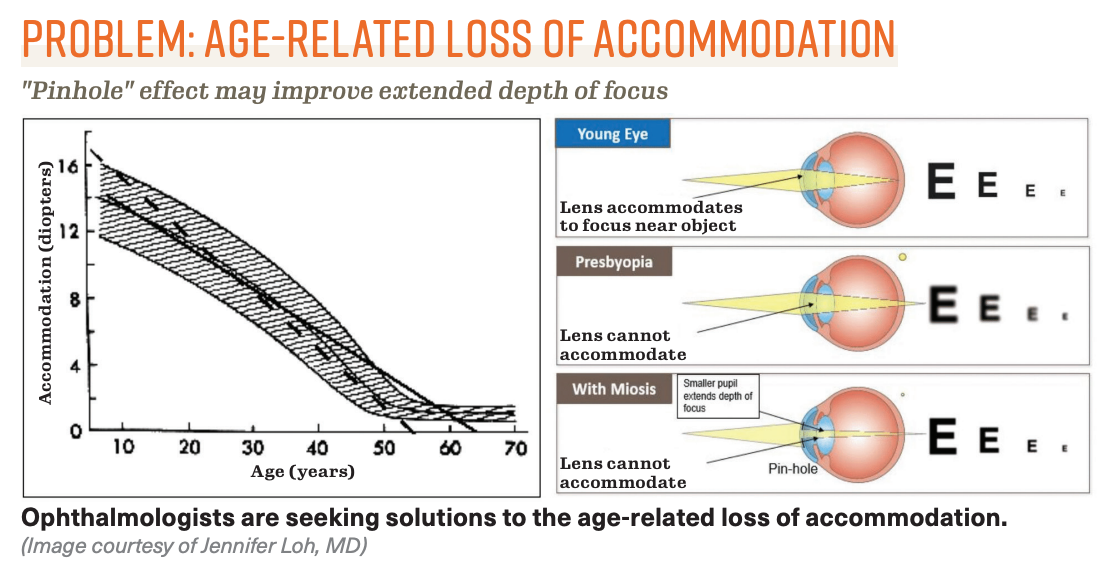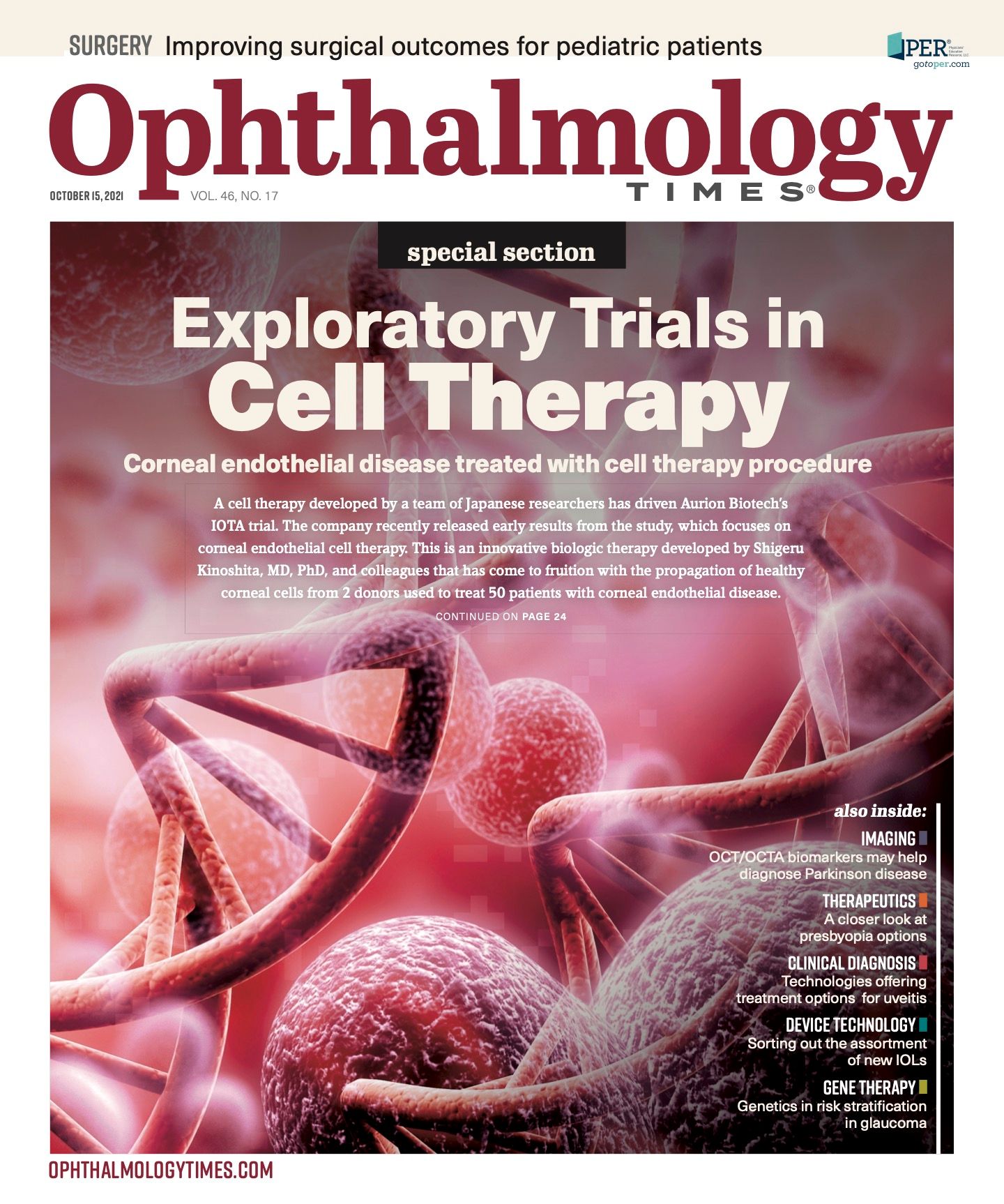Publication
Article
Digital Edition
A closer look at presbyopia options
Author(s):
Demographics show high demand for solutions beyond eyeglasses.

Loh

Reviewed by Jennifer Loh, MD
The aging of the population has brought greater demand for solutions to presbyopia beyond reading glasses.
“Presbyopia is a huge underserved problem,” stated Jennifer Loh, MD, a private practitioner from Miami, who noted that 40% of patients would like an alternative to reading glasses, and more than two-thirds would consider an effective eye drop.
Despite the large potential market, there are no approved drug therapies. All available therapies such as glasses, contacts, lens exchange, inlays, and monovision have drawbacks.
Related: Highlights from first FDA-reported study for treatment of presbyopia
Other options
Presbyopia drops are an option. Several companies are considering miotic eye drops with the goal of increasing the range of vision by a pinhole effect without affecting distance vision and with minimal adverse effects (AEs).
Companies involved in development of a miotic product include Allergan (AGN-190584, 1.25% pilocarpine), Orasis Pharmaceuticals (CSF-1, low-dose pilocarpine, phase 3 trial), Visus (Brimochol, 0.1% brimonidine and 2.75% carbachol, phase 2 trial), Eyenovia (Microline 1% or 2% pilocarpine Optejet delivery, phase 3 trial), Ocuphire (phentolamine, pilocarpine 0.4% and 0.75% Nyxol, phase 2 trial), Kedalion (AcuStream 1% or 2% pilocarpine, phase 2 trial), Lenz Therapeutics (Aceclindine, phase 2 trial), and OSRX (EyeFocus-01, investigative product comprised of a miotic, α1 agonist, H1 antagonists, and nonsteroidal anti-inflammatory drug).
In addition to the miosis products, Novartis is working on an eye drop that softens the crystalline lens (EV06).
Related: Expectations are on rise for presbyopia-correcting therapeutic
The characteristics of a potentially great presbyopia eye drop include efficacy in improving near vision; safety (ie, maintaining distance vision and absence of headaches); durability; rapid onset within 30 minutes; convenience; and tunable pupil modulation, Loh pointed out.
In view
Of the previously mentioned products, the closest to achieving commercial availability is Allergan’s AGN-190584.
In the GEMINI I trial, the primary and key secondary end points were met without compromising the distance vision.
The drop achieved a 3-line or greater improvement in the mesopic distance corrected near vision (DCNVA) with onset in 15 minutes; 92.5% of the study patients achieved 20/40 functional vision or better in the photopic DCNVA on day 30.
The treatment-associated AEs were mostly mild and transient and few patients discontinued use of the drop, and the pupillary response and the return to the baseline pupillary diameter within 24 hours were maintained from days 1 to 30 with no tachyphylaxis, Loh said.
Related: Analyzing GEMINI clinical trial results of presbyopia eye drop
Although various surgical and medical options are available, the need is great for an alternative nonsurgical and noncorrective lens option, she emphasized.
“Drops for presbyopia are an exciting technology for patients that can result in the reduced need for reading glasses before undergoing a surgery,” Loh concluded. “Drops would be both an excellent option for patients who had undergone a previous corneal refractive surgery and are now presbyopic and can serve as a bridge until surgery is needed. Finally, the drops can help patients continue to appear youthful.”
--
Jennifer Loh, MD
E: jenniferlohmd@gmail.com
This article is adapted from Loh’s presentation at the Women In Ophthalmology 2021 Summer Symposium. She is a consultant and adviser to Allergan, Orasis Pharmaceuticals, and Novartis.

Newsletter
Don’t miss out—get Ophthalmology Times updates on the latest clinical advancements and expert interviews, straight to your inbox.




